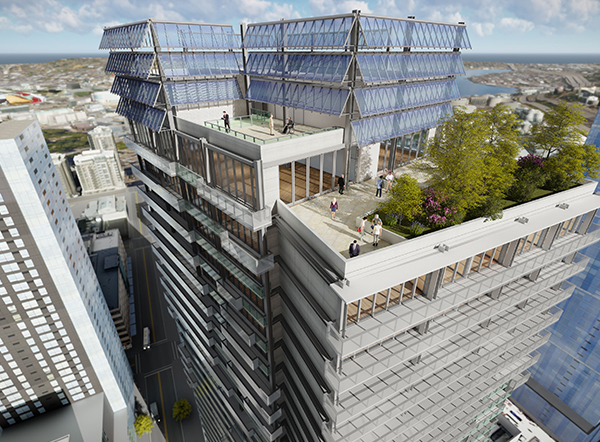The construction industry has always been central to how societies grow and thrive. Over time, methods have evolved, but today the pace of innovation is faster than ever. Rising costs, labor shortages, and increasing environmental concerns have forced builders and developers to rethink how projects are delivered. In this environment, prefabrication and modular building have stepped up as solutions that combine speed with quality. Far from being a passing trend, they represent a fundamental shift in the way we think about construction and urban development.
Faster Timelines, Higher Efficiency
Traditional construction is often plagued by delays. Weather interruptions, site restrictions, and workforce shortages can all push back delivery dates, creating frustration for developers and future occupants. Prefabrication solves many of these problems by moving much of the work indoors to controlled factory settings. Panels, sections, and even entire modules of buildings are assembled off-site before being transported for final installation.
This approach can reduce project timelines by as much as half, creating immense value in industries where time directly affects cost. It mirrors the simplicity of a hidden face dp for girls on social media, where something simple still has the power to make a strong impression. In the same way, prefabricated methods prove that efficiency does not mean sacrificing depth or quality.
Real Estate Demands Driving Growth
The Real Estate sector constantly adapts to shifts in lifestyle and population needs. Urban centers are growing, affordable housing is in demand, and flexible office spaces are essential for the new era of work. Developers must respond quickly to these changes, and prefabrication gives them the tools to do so.
For instance, housing projects that might take years using traditional methods can be delivered in a fraction of the time with modular building. Commercial developments, such as shopping centers or office complexes, can open their doors sooner and begin generating income more quickly. Investors see faster returns, and communities benefit from reduced waiting times for essential spaces.
Sustainability As A Core Value
Speed is not the only advantage. Sustainability is equally important in today’s construction landscape. Traditional building sites create enormous amounts of waste, much of which goes unused and ends up in landfills. In contrast, modular construction operates with precision. Factories recycle leftover materials, minimize waste, and optimize processes.
This reduction in environmental impact is especially appealing to governments and developers working toward greener cities. By lowering energy consumption and carbon emissions, prefabrication supports long-term environmental goals while still meeting immediate needs.
Supporting Small And Medium Businesses
Prefabrication is not just for large housing developments or major infrastructure projects. It also plays a vital role in helping small and medium businesses expand. A café, dental clinic, or retail shop can all be established quickly using modular methods. This allows entrepreneurs to start operating faster and avoid long delays that can drain resources.
Directories like add your business make it easier for companies to connect with customers, but prefabrication helps them take the physical step of opening doors in record time. For startups and small enterprises, this can be the key to gaining a competitive advantage.

Flexibility And Personal Design Choices
Another misconception about modular construction is that it produces uniform, uninspired buildings. That may have been true decades ago, but the reality today is very different. Advances in design, engineering, and material technology allow modular projects to be as unique as the people who use them.
Homes can be customized to reflect family needs, offices can be designed with modern layouts, and schools or community centers can be adapted to cultural and practical requirements. This flexibility is similar to the individuality found on platforms such as www.mysadshayari.com, where personal voices and creativity shine. Modular construction extends that same principle into the physical environment.
Addressing Misconceptions
Skepticism remains in some corners of the industry. People may assume that prefabricated buildings lack durability or long-term value. However, modern modular structures meet the same building codes and safety standards as traditional construction. In many cases, they surpass those standards because of the quality control that comes with factory assembly.
From luxury hotels to high-rise residential complexes, modular construction has already proven its worth. With more successful examples visible around the world, trust in this method continues to grow.
Everyday Integration Into Communities
Prefabrication is no longer limited to experimental projects. It is becoming part of daily life. Schools, hospitals, and government offices are increasingly being built with modular methods. Even in urban entertainment districts, when people search to find bars or restaurants, they may discover that some of these venues were constructed using modular components to ensure a fast launch.
This integration shows that modular construction is not a niche approach but a mainstream solution for modern living. Communities are starting to embrace the benefits without hesitation.
Looking Ahead To The Future
The future of construction will rely heavily on prefabrication and modular building. Governments see the potential for meeting affordable housing targets quickly. Developers recognize the financial advantages of faster delivery and lower waste. Businesses benefit from quicker access to physical spaces, while communities appreciate both the speed and the sustainability.
As these methods continue to improve, we can expect even more innovation. From smart technology integration to adaptable housing units, modular construction will evolve alongside the demands of modern society. The combination of flexibility, cost efficiency, and environmental responsibility ensures it will remain central to the industry’s future.
Conclusion
Prefabrication and modular construction are not temporary solutions. They represent a revolution in the way buildings are planned, designed, and delivered. By reducing timelines, minimizing waste, and allowing customization, they address the challenges of modern construction head-on. Developers, businesses, and communities all stand to benefit from their rise. The future of fast construction is already here, and it is being built piece by piece in factories, transported across cities, and assembled into spaces where people live, work, and thrive.

